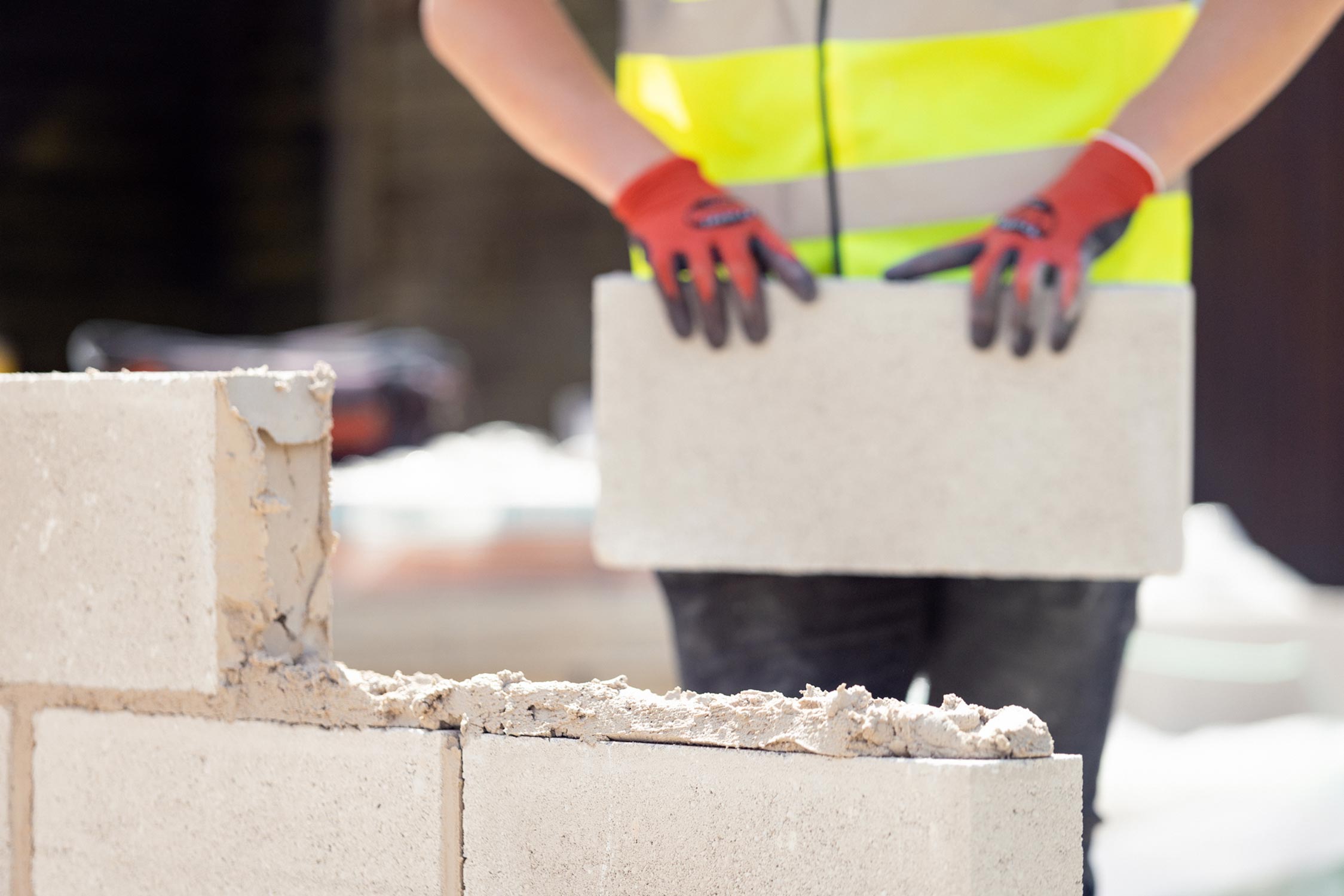Cement-free concrete launches in the UK — can it solve the embodied carbon problem?
CO2 from making cement is a ongoing problem in the building industry. This new cement-free product could be the solution

A cement-free alternative for making concrete and mortar has been launched in the UK for environmentally conscious builders, self-builders and DIYers.
It is hoped that it could potentially solve the problem of embodied carbon in the building industry, a major focus for those trying to lower carbon emissions.
Embodied carbon is the amount of CO2 produced during construction of buildings, with building regulations potentially being adjusted in the future in a bid to lower it. A large portion of this CO2 is from the cement that goes into making both concrete and mortar and it is estimated that if this was replaced by a cement-free binder it could reduce the embodied carbon output on a building by as much as 80%.
Right now, it's estimated that if the cement industry were a country, it would be the third largest carbon dioxide emitter after China and the US.
Here's everything you need to know, including whether the cement-free alternative— named 'Cemfree' — is compliant with building regulations and whether it is a worthwhile sustainable alternative to standard masonry cements.
What is cement-free mortar?
Cemfree is claimed to be a low-carbon alternative to Portland cement (OPC) – concrete’s most carbon-expensive material.
OPC is the most common type of cement in general use around the world. It is usually made from limestone and was developed from other types of hydraulic lime in England in the early 19th century by Joseph Aspdin.
Get the Homebuilding & Renovating Newsletter
Bring your dream home to life with expert advice, how to guides and design inspiration. Sign up for our newsletter and get two free tickets to a Homebuilding & Renovating Show near you.
Cemfree instead uses an alkali-activated cementitious material (AACM) created from a range of materials (usually industrial by-products), known as precursors, which are added to an alkaline medium to produce a cementitious material.
Cemfree will be available in premixed bulk 25KG bags, as well as it being possible to buy cement-free low-carbon concrete blocks.
Is cement-free mortar compliant with building regs?
Yes, Cemfree products have the UKCA marking to show it meets the essential requirements of legislation for products being placed on the market in Great Britain.
It also meets the BS EN 771-5 specification, which specifies the characteristics and performance requirements of manufactured stone masonry units for which the main intended uses are facing or exposed masonry in load-bearing or non-load bearing building and civil engineering applications.
Is the cement-free alternative laid in the same way as cement mortar when bricklaying?
Essentially yes. Cemfree says its cement-free product performs in a similar way to standard cement-based mortars and delivers comparable consistency, curing times, and offers “excellent workability”.
Katie Wills, project manager for masonry mortar at Cemfree, says it has all of the structural characteristics of traditional concrete but is more durable and uses the same production techniques.
She added: “This makes its adoption extremely simple without the need to invest in new equipment or change working practices.”
How is Cemfree better for the environment?
Cement is made by firing limestone, clay, and other materials in a kiln. CO2 is emitted from the energy used to fire the material, and the chemical reaction produced from the mixture when it is exposed to heat. According to the US National Ready Mixed Concrete Association, each pound of concrete releases 0.93 pounds of carbon dioxide.
The alternative proprietary alkali-activated cementitious material used in Cemfree instead, activates materials such as Ground Granulated Blast-furnace Slag (GGBS), a by-product of iron and steel making, and Pulverised Fuel Ash (PFA), the fine ash carried out with the flue gases from a furnace, to create the binder.
“Cemfree Masonry Mortar is a major step forward in terms of reducing the amount of carbon emissions produced by conventional Portland cement-based products,” Katie added.
“When used in conjunction with Cemfree concrete blocks, which are now widely available across the UK, the CO2 savings can be even more substantial. This is another major step forward in helping to protect our planet”.
Sam is based in Coventry and has been a news reporter for nearly 20 years. His work has featured in the Mirror, The Sun, MailOnline, the Independent, and news outlets throughout the world. As a copywriter, he has written for clients as diverse as Saint-Gobain, Michelin, Halfords Autocentre, Great British Heating, and Irwin Industrial Tools. During the pandemic, he converted a van into a mini-camper and is currently planning to convert his shed into an office and Star Wars shrine.

